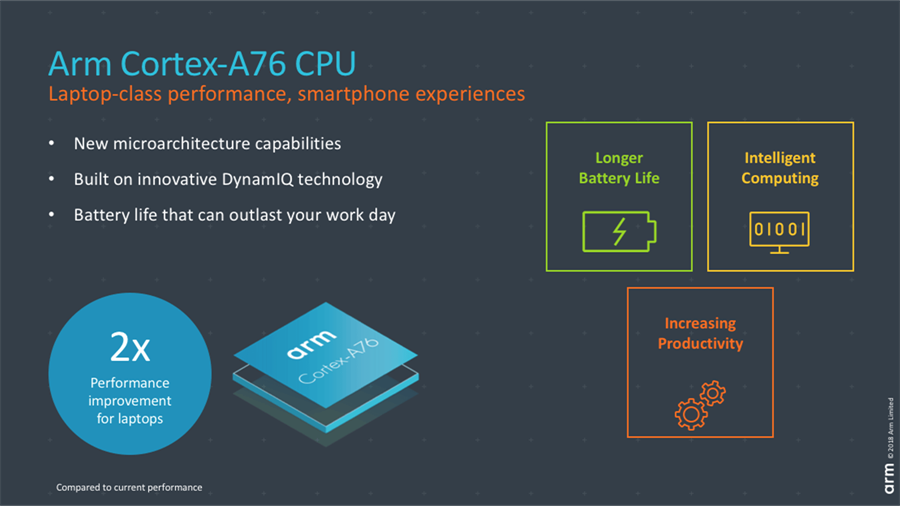
British chip manufacturer ARM has recently announced production of its Cortex A76 processor, promising laptop-class performance, by its tentative release in 2019.
The concept of high-performance ARM processors has been a reality for years, but insofar relegated to powering devices running mobile operating systems like Android and iOS, and ultraportable netbooks running Chrome OS. Speaking of the latter, some of the most powerful mobile devices using ARM chips include the Apple iPad Pro, and the latest Chromebooks by Asus, like the 6-core RK3399 powered Chromebook Flip C101.
It’s been a few years since Microsoft and Qualcomm have partnered with plans of creating a line of ARM-powered Windows 10 laptops and tablets, like the “Always Connected” Windows 10 2-in-1s from Asus, powered by a Snapdragon 835.
According to current rumors regarding Apple’s plans of producing its own ARM chips to power MacBooks, a question remains on which ARM design will Apple use for its future laptops, and the Cortex A76 seems a likely choice, as ARM has reported a 35% increase in performance, compared to the existing Cortex A75. The performance boost could mean bringing the upcoming A76 chip up to par with Intel Core i5 processors, in both speed, and energy efficiency, the latter of which is a main selling point, not only with regard to Chromebooks and tablets in general, but especially when it comes to laptops running desktop operating systems like Mac OS and Windows 10.
To put things in perspective, the fact that an ARM chip can match Intel i5 performance could mean that all entry-level MacBooks configurations like the MacBook Air, and Pro, could in theory run just as fast, or faster, if powered by a Cortex A76, and gain in battery power, by maintaining the same ultra-thin profile.
Furthermore, using ARM architecture would enable Apple to finally work towards developing proprietary CPUs with similar architecture, and begin the phasing out of Intel processors from all entry-level Mac devices configurations.
ARM architecture has been around for a long time, but its adoption in desktop ecosystems has just begun, and the sky’s the limit, including the possibility of ARM chips powering desktop devices like the Apple iMac, and the Mac Mini.